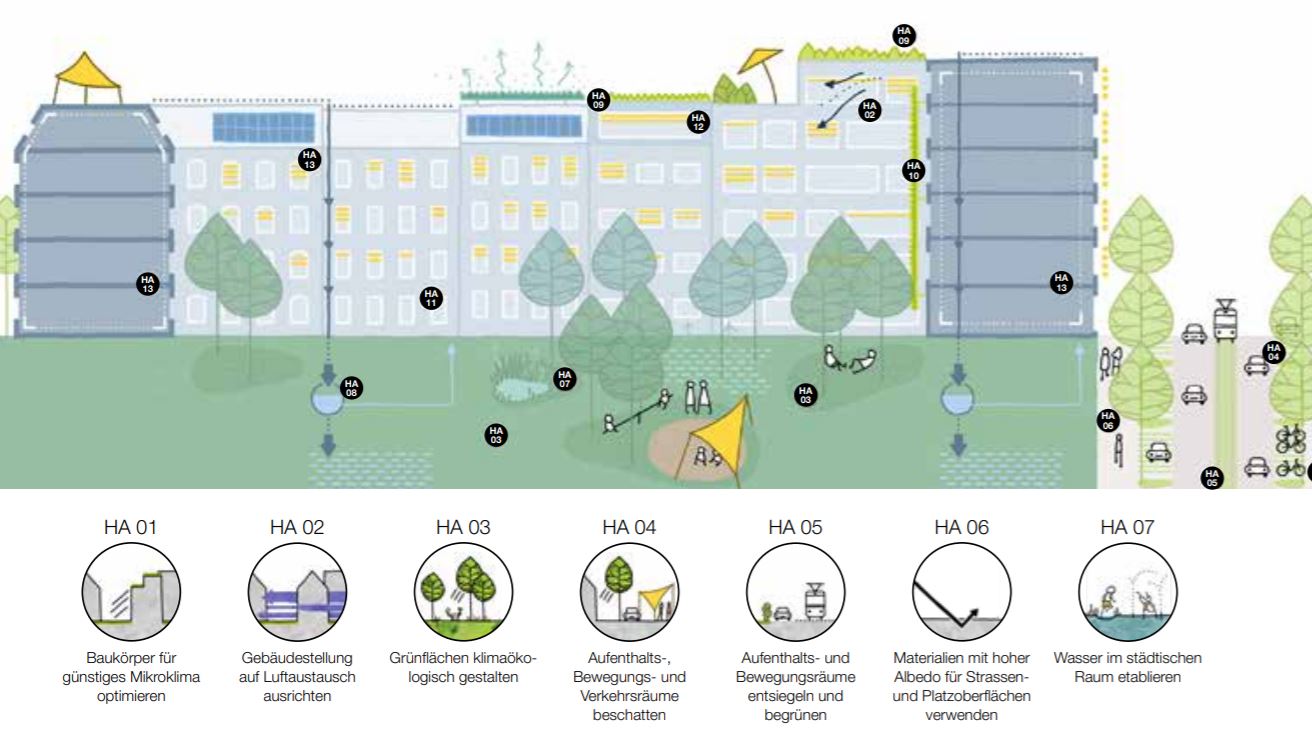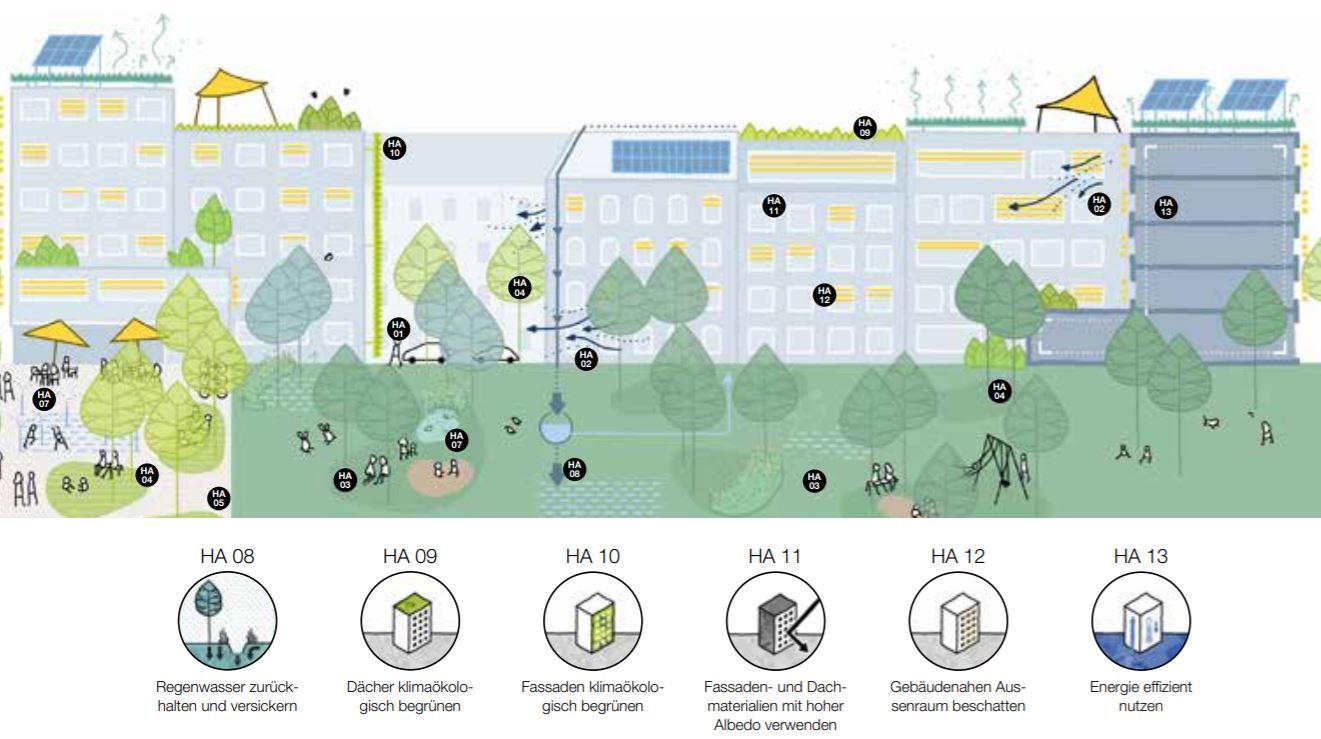City climate
Urban heat islands are areas that are significantly warmer than their surroundings. They impact the health of humans, animals, plants and cause rising costs.
City planning today has several mitigation strategies (Strategien zur Klimaanpassung) like green planning (trees, green roofs, fronts, etc.), measures to change local wind patterns, alternative building materials, water dispensers and many others. Sensors and data collection can help check the effectiveness of the measures.
City trees
- Urban trees are quick-change artists. A single tree absorbs around 500 kilograms of CO2 per year and generates enough oxygen for at least three adults through photosynthesis. Trees give us the air we need to breathe.
- Urban trees are vacuum cleaners. Thanks to its large leaf surface, a deciduous tree collects an average of 100 kilograms of fine dust per year. In addition, trees also filter nitrogen oxides and thus reduce the concentration of harmful substances. They thus make a decisive contribution to better air quality in busy city centers.
- Urban trees are air conditioning systems. It can easily be three to six degrees cooler under a tree in an asphalted environment. A deciduous tree with a crown of 15 m can cast around 160 m² of shade. On summer days, it evaporates several hundred liters of water, thereby drawing heat from the air.
- City trees are shared flats. Around 300 animal and plant species find their home in and around a tree. Trees create ecological niches for countless microorganisms, insects, birds, mammals, fungi, lichens and mosses. An old oak tree can even provide space for up to 700 insect species. And also lime trees, willows, apple trees, maple or beech are excellent protectors of species.
Source: Klimawandel findet Stadt (wirleben2000watt.com)
Remark: Rough average values for an approx. 30 year old deciduous tree
Possible questions: Where can I plant a tree? what do I need to clarify? who is responsible?
Urban gardening
From the city - for the city
- What kind of vegetables and fruits are appropriate when the climate changes (e.g. hot spells, heavy rain, floods)?
- Which techniques can be used?
- How can citizens organize themselves, e.g. who doesn't have time but wants their own products and who has time and desire to garden?
- Are there high tech methods?
City climate related approaches for action


Source: Fachplanung Hitzeminderung Stadt Zürich, S. 97/98 (2020) (stadt-zuerich.ch)